#oberlin college libraries
Text

Mudd Library, Oberlin College. Ohio, US. Warner, Burns, Toan and Lunde.
727 notes
·
View notes
Text


Tens of thousands of people visit Bank of America stadium to watch the Carolina Panthers play football each year – never realizing they are walking on top of lost remnants of a once-thriving Black neighborhood established in the aftermath of the Civil War.
The stadium itself is built directly atop a relic of segregated healthcare: Good Samaritan Hospital, the first private hospital built in North Carolina to serve Black patients. Built in 1891, this historic hospital was one of the oldest of its kind in the United States.
It was also the site of one of the “most horrific racial incidents in Charlotte's history,” according to Dan Aldridge, professor of History and Africana Studies at Davidson College.
A mob of 30 to 35 armed, white men invaded the hospital, dragging a man out of the hospital and into the streets – and shooting him dead in front of the building.
The concept of “urban renewal” destroyed Black neighborhoods, communities, businesses and homes all across North Carolina, especially between 1949 and 1974.

Durham, for example, once had a prominent Black Wall Street, where Black businesses flourished; however, the historic community was almost completely destroyed by construction of the Durham Freeway.
Likewise, Raleigh once had 13 historic Freedmen's Villages, built entirely by men and women freed from slavery in the aftermath of emancipation. Today, only two are remaining, and Oberlin Village, the largest one, was cut in half by the construction of Wade Avenue.
Similarly, Charlotte's Brooklyn community was built by men and women freed from slavery in the late 1800s. Like many Black communities around the state, it was forced into an awful geographical location – on low-lying land where flooding, sewage and sanitation issues made life hazardous.
According to history in the Charlotte Library, the Brooklyn area was first identified on maps as ‘Logtown’ in the late 1800s – a name that matches closely with titles given to similar freedmen villages in the Triangle area, which were often called slang names like ‘Slabtown’ or ‘Save Rent’ due to their inexpensive homes.
In the 1900s, the area became known as Brooklyn, “a name that would become synonymous with the Black community until urban renewal.”
“It's a tragedy that so many stadiums were built on sites that were once Black communities,” said Aldridge. “They're poor neighborhoods. They're struggling neighborhoods. I won't romanticize them by claiming they're all like Black Wall Street, but they were people's homes and people's communities, and they were taken from them.”
Many historically significant Black sites were lost in urban renewal; likewise, many Black communities were forced to build in geographically unfit areas, making growing wealth and property more difficult – and more easily lost over time.
At its peak, Brooklyn was home to:
Charlotte's first Black public school
Charlotte's only Black high school
The city's first free library for Black patrons
The first companies to offer white collar jobs to Black workers
The first private hospital for Black citizens in Charlotte
Today, football players run up and down the Bank of America field for the amusement of thousands of cheering fans. However, in 1913, over a century ago, that same land had a very different story.
(continue reading) related ↵ related ↵
#politics#urban renewal#structural racism#carolina panthers#bank of america#bank of america stadium#panthers stadium#good samaritan hospital#black wall street#blacklivesmatter#racism#erasure#displacement#north carolina#systemic racism#brooklyn nc#brooklyn north carolina#black history#football#nfl#nfl football#whitewashing history
108 notes
·
View notes
Photo

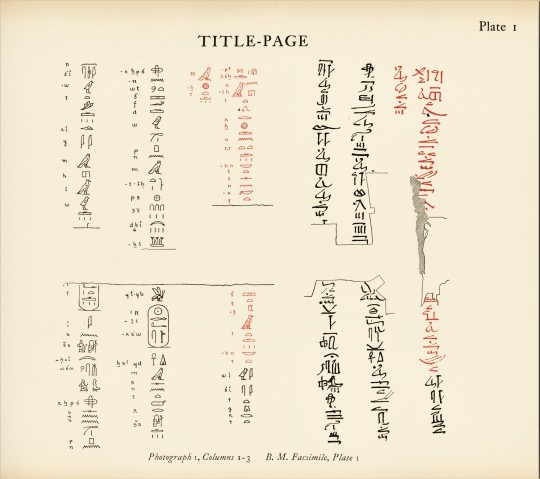
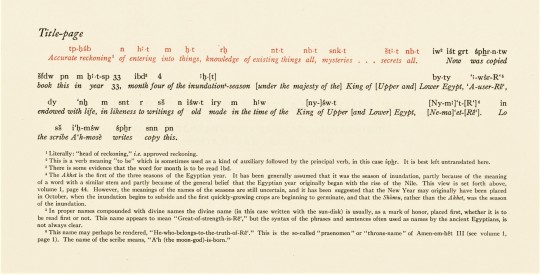



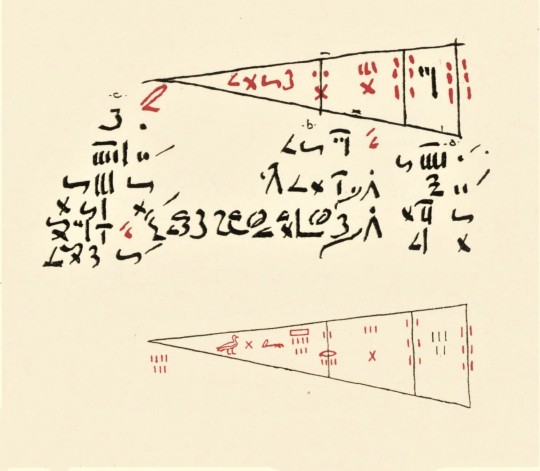



An Egyptian Mathematics Science Saturday
While Archimedes of Syracuse (287-212 BCE) is often considered the first to calculate the value of Pi (π), the Egyptians got pretty darn close a millennium and a half or so earlier, as evidenced by the Rhind Mathematical Papyrus. Copied by the scribe Ahmes sometime around 1650 BCE from an earlier text, the papyrus gives us a remarkable insight not only into Egyptian mathematics but also customs and culture, from taxation and farming practices to the exchange rate between beer and bread. It is named after Scottish antiquarian Alexander Henry Rhind, who acquired the papyrus sometime around 1858. Held by the British Museum since 1865, it is now suspected that the papyrus entered the antiquities market as a result of illegal excavations.
Our facsimile of the papyrus was the result of fifteen years of scholarship by mathematician Arnold Buffum Chace. The first volume was published in Oberlin, Ohio by the Mathematical Association of America in 1927, with the second volume following in 1929. All of the above images are from the second volume, which contains photographs of the papyrus, as well as transcription transliterations and literal translations by Chace. Chace was assisted in his work by mathematician Henry Parker Manning and Egyptologist Ludlow Seguine Bull. Also included in the second volume is a supplement to the “Bibliography of Egyptian Mathematics” from the first volume, both of which were prepared by Raymond Clare Archibald.
The first publication of the Rhind Papyrus was a translation into German in 1877 by August Eisenlohr. The Mathematical Association of America publication was part if a flurry of new scholarship surrounding the papyrus following advancements in scholarly understanding of Egyptian writing. In the preface to our edition, Chace notes the important 1923 translation by Eric Peet published by Liverpool University Press. Chace remarks that “Egyptologists ... will find philological matters fully discussed by Professor Peet,” while he intended for his work to be geared towards both mathematicians and the general public.
Both volumes were originally donated to the Library of the State Teachers College Milwaukee by the Carnegie Corporation of New York with their bookplate.
Check out more Science Saturday posts here.
-Olivia, Special Collections Graduate Intern
#Science Saturday#Rhind Papyrus#Rhind Mathematical Papyrus#Ahmes#Ahmose#Alexander Henry Rhind#Arnold Buffum Chace#Arnold Chace#Mathematical Association of America#Henry Parker Manning#Ludlow Seguine Bull#Raymond Archibald#August Eisenlohr#Eric Peet#Mathematics#Mathematics in Antiquity#Antiquities#Papyrus#olivia
34 notes
·
View notes
Text
i was in THE MIDDLE of putting together my cover letter and resume for a position in the OBERLIN COLLEGE AND CONSERVATORY LIBRARY and my ipad imploded 😐🔫
#IT PAYS SO GOOD? REQUIRES ALMOST NO SPECIFIC EXPERIENCE OF ANY KIND?#oberlin is kind of far from jake but the pay is so good i could probably get my own place way faster#t
4 notes
·
View notes
Text
who is that black barbie flaunting her beauty and brains around campus? 𝐊𝐄𝐋𝐈 𝐒𝐖𝐄𝐄𝐓 is a pansexual journalism major who’s also minoring in business administration. for any further facts on the Brooklyn-native, scroll below the cut ! for plots + connections, like this post or i can come to you. open to anything beyond what i already have written out.

𝐛𝐢𝐫𝐭𝐡𝐩𝐥𝐚𝐜𝐞 + 𝐝𝐚𝐲. ╳ ( brooklyn, ny + july 3rd, 1997. )
𝐬𝐞𝐱𝐮𝐚𝐥𝐢𝐭𝐲. ╳ ( pansexual w. masc lean. )
𝐚𝐬𝐭𝐫𝐨𝐥𝐨𝐠𝐢𝐜𝐚𝐥 𝐛𝐢𝐠 𝟑. ╳ ( sun: cancer, moon: pisces, rising: cancer. )
𝐨𝐜𝐜𝐮𝐩𝐚𝐭𝐢𝐨𝐧. ╳ ( boutique employee. )
𝐜𝐥𝐚𝐬𝐬𝐢𝐟𝐢𝐜𝐚𝐭𝐢𝐨𝐧 + 𝐬𝐭𝐚𝐭𝐮𝐬. ╳ ( senior + first gen student. )
𝐜𝐨𝐥𝐥𝐞𝐠𝐞 𝐩𝐫𝐨𝐠𝐫𝐚𝐦. ╳ ( liberal arts. )
𝐬𝐩𝐨𝐫𝐭𝐬 + 𝐜𝐥𝐮𝐛𝐬. ╳ ( cheerleading, fashion guard, and yearbook. )
𝐠𝐫𝐞𝐞𝐤. ╳ ( omega chi upsilon. )
𝐢𝐧𝐭𝐞𝐫𝐞𝐬𝐭𝐬. ╳ ( writing + blogging, beauty + skin-care, acrylic nails, dance + cheerleading, fashion, body jewelry. )
𝐥𝐚𝐬𝐭 𝐩𝐢𝐧𝐧𝐞𝐝 𝐥𝐨𝐜𝐚𝐭𝐢𝐨𝐧. 📍 ╳ ( grande oak library. )
𝐦𝐨𝐬𝐭 𝐩𝐥𝐚𝐲𝐞𝐝 𝐚𝐫𝐭𝐢𝐬𝐭. ╳ ( ₁ lil durk ₂ summer walker, ₃ fivio foreign. )
𝐜𝐡𝐚𝐫𝐚𝐜𝐭𝐞𝐫 𝐩𝐚𝐫𝐚𝐥𝐥𝐞𝐥𝐬. ╳ ( regina george, chanel oberlin, layla keating, alison dilaurentis. )
+ 𝐭𝐫𝐚𝐢𝐭𝐬. ╳ ( honest, reliable, persistent, creative. )
- 𝐭𝐫𝐚𝐢𝐭𝐬. ╳ ( self-centered, greedy, apathetic, vindictive, sarcastic. )

CONNECTIONS. ┊
( CONNECT NAME. ) BOYFRIEND/GIRLFRIEND. ࿐ despite what others think of MUSE A, MUSE B has always seen the good in her; it’s almost like they’re the only person to see innocence within her deviousness — which she adores, obvs. the couple are deemed relationship goals amongst their peers and they have ( ? ) years under their belt to back it up. however, everyone fails to notice the true issues within the relationship that seems perfect from the outside looking in.
( CONNECTION NAME. ) BEST FRIEND. ࿐ ever since MUSE A relocated to THU just in time for her freshman year of college, she met MUSE B and they immediately hit it off. her best friend was everything she saw in herself: beautiful, loyal, and charming; which is why they’ve remained friends all these years.
( TYREK DAVIS. ) EX-FLING. ࿐ during their time at THU, MUSE A and MUSE B never got along thanks to their tumultuous 'situationship' from the past. initially, it was the perfect arrangement as they both received the perks of a relationship without the hassle of a real commitment but one fight after another, it grew tiresome and after MUSE B publicly embarrassed her the two never spoke again; but MUSE A didn’t forget.
other wanted connects. ┊fashion guard and/or yearbook club members, close friends, campus associates, boy toys.
#ꨄ ╱ 𝒌𝒆𝒍𝒊2𝒔𝒘𝒆𝒆𝒕. ‹ 𝐒𝐓𝐑𝐓.#ꨄ ╱ 𝒌𝒆𝒍𝒊2𝒔𝒘𝒆𝒆𝒕. ‹ 𝐓𝐒𝐊.#ꨄ ╱ 𝒌𝒆𝒍𝒊2𝒔𝒘𝒆𝒆𝒕. ‹ 𝐈𝐆.#ꨄ ╱ 𝒌𝒆𝒍𝒊2𝒔𝒘𝒆𝒆𝒕. ‹ 𝐓𝐖𝐈𝐓𝐓𝐄𝐑.#ꨄ ╱ 𝒌𝒆𝒍𝒊2𝒔𝒘𝒆𝒆𝒕. ‹ 𝐂𝐋 𝐒𝐓𝐑𝐓.#ꨄ ╱ 𝒌𝒆𝒍𝒊2𝒔𝒘𝒆𝒆𝒕. ‹ 𝐑𝐃 𝐎𝐍𝐋𝐘.#ꨄ ╱ 𝒌𝒆𝒍𝒊2𝒔𝒘𝒆𝒆𝒕. ‹ 𝐃𝐄𝐕.#ꨄ ╱ 𝒌𝒆𝒍𝒊2𝒔𝒘𝒆𝒆𝒕. ‹ 𝐑𝐂𝐓𝐈𝐎𝐍.#ꨄ ╱ 𝒌𝒆𝒍𝒊2𝒔𝒘𝒆𝒆𝒕. ‹ 𝐏𝐓.#ꨄ ╱ 𝒌𝒆𝒍𝒊2𝒔𝒘𝒆𝒆𝒕. ‹ 𝐀𝐍𝐎𝐍.#ꨄ ╱ 𝒌𝒆𝒍𝒊2𝒔𝒘𝒆𝒆𝒕. ‹ 𝐈𝐒𝐌𝐒.#ꨄ ╱ 𝒌𝒆𝒍𝒊2𝒔𝒘𝒆𝒆𝒕. ‹ 𝐏𝐀𝐑𝐀𝐋𝐋𝐄𝐋𝐒.#ꨄ ╱ 𝒌𝒆𝒍𝒊2𝒔𝒘𝒆𝒆𝒕. ‹ 𝐏𝐒𝐘𝐂𝐇𝐄.#ꨄ ╱ 𝒌𝒆𝒍𝒊2𝒔𝒘𝒆𝒆𝒕. ‹ 𝐂𝐇𝐂𝐓𝐄𝐑 𝐒𝐓𝐔𝐃𝐘.#ꨄ ╱ 𝒌𝒆𝒍𝒊2𝒔𝒘𝒆𝒆𝒕. ‹ 𝐀𝐁𝐓.#ꨄ ╱ 𝒌𝒆𝒍𝒊2𝒔𝒘𝒆𝒆𝒕. ‹ 𝐀𝐄𝐒𝐓𝐇𝐄𝐓𝐈𝐂𝐒.#ꨄ ╱ 𝒌𝒆𝒍𝒊2𝒔𝒘𝒆𝒆𝒕. ‹ 𝐕𝐈𝐒𝐀𝐆𝐄.#thu.intro#ꨄ ╱ 𝒌𝒆𝒍𝒊2𝒔𝒘𝒆𝒆𝒕. ‹ 𝐆𝐀𝐌𝐄𝐒.
11 notes
·
View notes
Photo

Robert Nathaniel Dett (October 11, 1882 – October 2, 1943), from a precocious five-year-old piano player to an internationally known choral director, composer, concert pianist, and poet, became champion for the preservation of the African American spiritual which he called authentic American folk music: He dedicated his life to finding a musical form to bridge the gap between the music’s simple origins and its concert performance. He was born in Drummondville, Ontario, a town founded before the American Civil War by fugitive slaves. His early experience included absorbing spirituals his grandmother sang, playing piano in church, and studying piano locally. He then majored in piano and composition at the Oberlin Conservatory of Music in Ohio. He was the first African American to graduate from Oberlin after winning Phi Beta Kappa honors. His formal education continued throughout his life including studies at Harvard University where his 1920 essay “Negro Music” won a prize. He received a MA from the Eastman School of Music. He published his only book of poetry, The Album of the Heart. He began touring as a concert pianist. He married Helen Elise Smith, a pianist and the first African American graduate of the Damrosch Institute of Musical Art. After teaching at several HBCUs in the South, he became the music director at the Hampton Institute. His 40-voice Hampton Singers performed at Carnegie Hall in 1914. His choirs gained fame singing across the US and at the Library of Congress. His choirs performed at the White House before Presidents Herbert Hoover and Franklin Roosevelt. He and his choir toured five European countries. He published more than 200 piano, vocal, and choral works. Major chorus works include Chariot Jubilee and an oratorio, The Ordering of Moses, which was drawn from his master’s thesis at the Eastman School of Music. Popular favorites were Listen to the Lambs, Don’t be Weary, Traveler, and Juba. He moved to Rochester, taught privately, and led a sixteen-voice chorus for weekly radio broadcasts. He continued to teach at several colleges. He was survived by his wife and two daughters. #africanhistory365 #africanexcellence https://www.instagram.com/p/CjkiGlXLdR5/?igshid=NGJjMDIxMWI=
0 notes
Photo

october 25, 1992.
it is with a heavy heart that we must announce the passing of our beloved daughter, sarah. a bright girl who volunteered her free time at the library and tutoring children at the local middle school. she always had a kind word to share with others and chose to remain in hallows instead of moving away for college to remain close to her mother, sandra oberlin. these two along with my son, wyatt, have been the light of my life. however, everything feels more somber and bleak now without the constant laughter of my little girl. i have been writing for this paper for over thirty years and never imagined someday i’d be writing a farewell of sorts for my own daughter. with the knowledge that many people in town considered sarah a friend, we extend the invitation for everyone to attend her funeral which will be held the morning of november 1st, considering the town’s adoration for halloween celebrations, we found it prudent to wait an extra day so that sarah may be honored with a whole day to herself.
i feel it is best to leave the investigation up to the police department who are working hard and have my full trust when it comes to the investigation. i’m sure it has come to the attention of everyone around hallows that sarah has not only passed away but was murdered in our own home. dear reader, i know you can’t begin to imagine the horror that my wife felt when she found sarah laying there in her own bedroom covered in blood. it hurts my heart and fills me with rage to type the words out. anyone that has any leads is asked to please report information to the sheriff directly. thank you to everyone who cared about sarah. there is no doubt in my mind that those responsible will be brought to justice.
- wilfred oberlin.
1 note
·
View note
Photo



The Vermillion Institute
150 E. Main Street
Hayesville, Ohio 44838
The Vermillion Institute located at Main and College Sts. in Hayesville, Ohio, was a co-educational school that during the mid to late nineteenth century was a preeminent center of higher education that trained people who became prominent in various professions. At one time it was a rival to Oberlin, Kenyon, or Denison. Founded 1843 as one of the first institutions of higher education in north central Ohio, it was chartered by Ohio Legislature March 4, 1845. Originally Baptist, by 1849 it became Presbyterian-affiliated. Its cornerstone was laid July 4, 1845. Future U. S. President Rutherford B. Hayes was said to have attended the dedication, music for which was provided by the Jeromesville, Ohio band. It was built by Edwin Hubbard and its design is credited to Ashland native Ozias S. Kinney (1811–1869), who later was an architect in Chicago.
This 35 by 50 ft. three-story brick building with gable roof and two-stage tower with pinnacles is the surviving main building of the Vermillion Institute. The ground floor was an assembly space used for daily chapel services. The second floor had classrooms and a library and meeting rooms for literary societies were on the third floor. During its operation, two-story flanking frame buildings served as men's and women's dormitories, but these no longer stand. The thick brick walls with flat-arched lintels over its numerous windows enabled the building to stand through years of neglect.
At one time this academy/college had an enrollment of about 600 students who came from 13 states. Longtime leader at the Vermillion Institute was Professor Saunders Diefendorf, a Yale-educated Presbyterian minister, who was the principal in 1851. Enrollment declined as students and faculty left to fight in the American Civil War and the institute went into a long slow decline. Diefendorf left Hayesville in 1866 after the Vermillion Institute was not accepted as the site for the new Presbyterian college, which instead went to Wooster. After its rejection as the site of a new Church of God college, located later at Findlay, Ohio, the institute property was sold back to Hayesville and operated as a private academy. Diefendorf returned to head this reorganized school, which was a preparatory academy to the College of Wooster. The building later served the home of the Hayesville High School (1886–1929).
The 1929 opening of new combined elementary and high school at the opposite end of the village meant the end of public use of the Vermillion Institute. It was partially used for social organizations but was largely abandoned. A tall stone fountain with memorial plaques once stood in front of the building, until its removal in the 1950s to nearby Kendig Park. On March 29, 1978, the Vermillion Institute was added to the National Register of Historic Places. In 2011, the property was purchased by preservation consultant Steven McQuillin of Steven McQuillin and Associates, a historic preservation consulting firm that has been in business for 35 years, and an extensive rehabilitation was begun, with assistance from the Ohio Preservation Tax Credit. The two-foot-thick brick walls of the building were repointed and strengthened by filling the chimney cavities with reinforced concrete and pouring a concrete wall inside the rubble sandstone base. Masonry walls were braced and repointed and the wood structure removed. Deteriorated hewn wood trusses were replaced with new wood trusses. New structure re-creates floors at their original levels.
The long-missing tower was reconstructed and contains a two-level office space featuring cherry woodwork and stained glass windows, plus winding staircase leading to the main two-story cherry staircase. The ground floor is a meeting space that is also available for rental and can seat 50-75 guests for meals and 100 guests for events. The second floor has a great room space, combining kitchen and living areas. The northeast corner has a dining room with table built from old timbers taken from the building and whose walls will have scenic murals. The third floor has a library on the east side with books on preservation and historic atlases and two rooms connected by a large bathroom on the west side. The fourth floor has an open space overlooking the library and a rear bedroom. The Vermillion Institute is open for tours by appointment and is available to area community organizations. Open houses are held in the summer and around the holidays.
0 notes
Photo
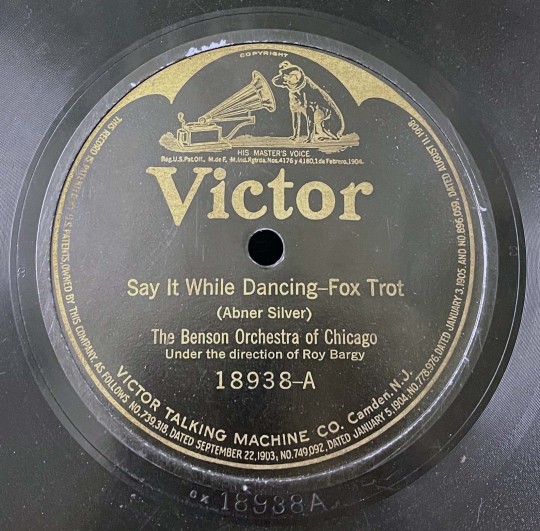



New Year, New (Old) Sounds in the Public Domain!
On January 1st, 2022, all sound recordings made before 1923 entered the public domain, an estimated 400,000 sound recordings that document the beginning of recording technologies and include a rich variety of musical styles, such as vaudeville, ragtime, and early jazz. Some notable examples highlighted by the Association for Recorded Sound Collections are “Crazy Blues,” performed by Mamie Smith and her Jazz Hounds in 1920, and a 1917 recording of “Dixieland Jass Band One-Step” by the Original Dixieland Jass Band. The 78 rpm records seen here are part of the Oberlin Conservatory Library’s James R. and Susan Neumann Jazz Collection, and the sheet music is part of the Stanley King Jazz Collection.
Learn more about the Music Modernization Act, passed by Congress in 2018, that allows these recordings to enter the public domain. Listen to pre-1923 sound recordings available at The Public Domain Review, the Internet Archive, and the National Jukebox at the Library of Congress. And lastly, join the virtual party for Public Domain Day on January 20th: A Celebration of Sound. Cheers!
#Oberlin#Oberlin College#oberlin college libraries#oberlin conservatory#conservatory library#public domain#jazz#neumann jazz#music history#Music Monday
86 notes
·
View notes
Photo
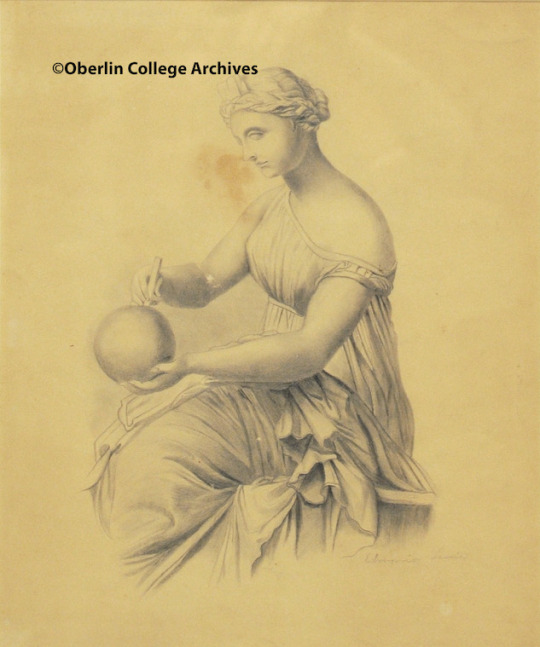
Edmonia Lewis and Oberlin College
The United States Postal Service has announced that artist and sculptor Edmonia Lewis will be featured on a Forever Stamp, the 45th stamp in their Black Heritage series. The stamps will be dedicated and go on sale on January 26, 2022.
Edmonia Lewis was born in New York or Ohio in 1843 or 1845 to a free Black father and Native American mother. Also known as Mary Edmonia Lewis, not much is known about her early life. Lewis attended the Oberlin Preparatory Department from 1859-1860, and the Literary Department (women’s course) from 1860-1862. Unfortunately, Lewis was accused of poisoning two of her white classmates with wine in 1862 (see “Spiced Wine” by Geoffrey Blodgett, Oberlin Alumni Magazine, February 1970). The case was later dropped after being represented by John Mercer Langston. Later, in February of 1863, she was accused of (later acquitted) stealing paint brushes and paints from an art teacher in Oberlin. Because of the incidents that Lewis was involved in, she was no longer allowed to continue in the women’s course and subsequently left Oberlin for Boston where she started a career as a sculptor. Lewis sculpted noted abolitionists, and is well known for using Italian style to depict Native American subjects.
The College Archives does not hold a personal paper collection for Edmonia Lewis, but we do have a pencil drawing, pictured above, located in our Paintings, Prints, and Drawings collection. This drawing was done by Lewis for Clara Steele Norton (Oberlin College A.B. 1862) upon her announcement to be married to Judson Cross (enr. 1855-1862). This drawing is sometimes referred to as A Wedding Gift or Untitled Drawing of Urania. (See “A Wedding Gift of 1862″ by Marcia Goldberg and William E. Bigglestone, Oberlin Alumni Magazine, June/July 1977).
We also have a variety of articles and other secondary sources on Edmonia Lewis. Please contact the College Archives if you would like to know more about Edmonia Lewis and her fascinating artistic legacy.
#Oberlin#Oberlin College#Oberlin College Archives#Oberlin College Libraries#Edmonia Lewis#Urania#Archives
55 notes
·
View notes
Text

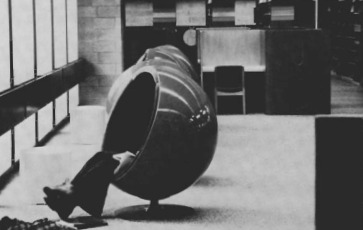

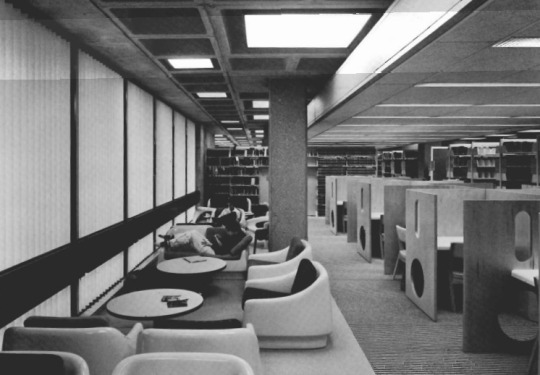

Mudd Library, Oberlin College. Warner, Burns, Toan & Lunde.
#brutalism#brutalist#architecture#interior#interiors#design#oberlin#college#university#ohio#library#mudd#eero aarnio#chair#ball#bubble
274 notes
·
View notes
Text


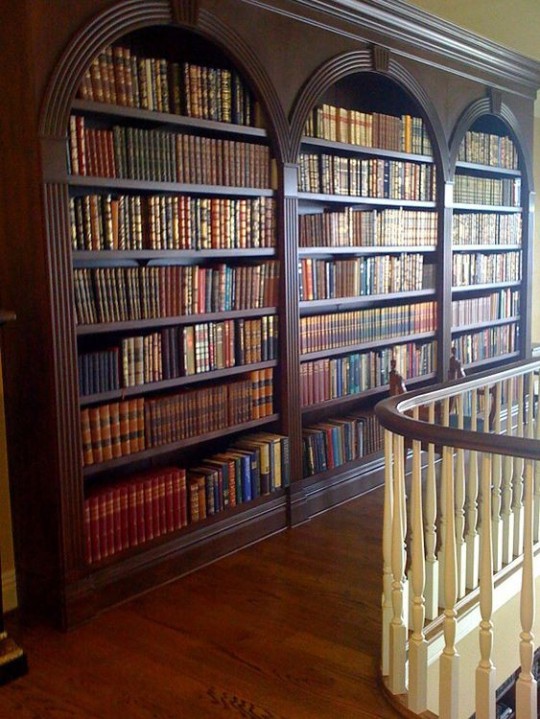



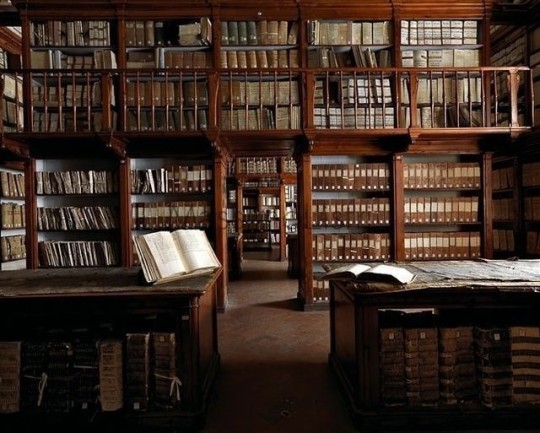
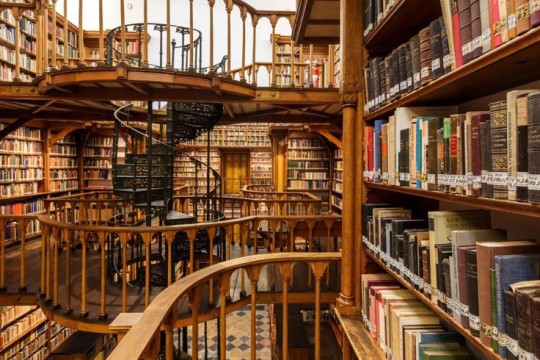
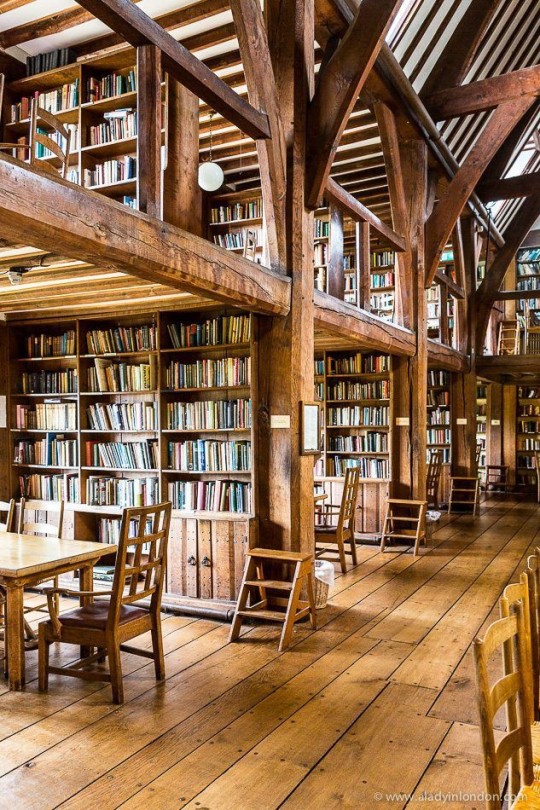

#dark academic aesthetic#dark acadamia aesthetic#aesthetic#brown aesthetic#brown academia#aestethic#dark academia#dark aesthetic#aestheitcs#libraries are wonderful#and libraries image#academic libraries#public libraries#libraries#oberlin college libraries#i miss libraries#i love libraries#librariesrock#booklover#book#bookblr#books#bookworm#bookaholic#bookish
97 notes
·
View notes
Text
Our Last Post - but this is not goodbye!

Just a few parting shots from the Science Library.
Above, a portion of a book display for Black History Month, “Celebrating Black achievement in science, and highlighting the need to continue to diversify STEM education and disciplines.”
Below, new journal issues continue to be received in print - not as many as were received just a year ago, for sure, as we rely on online access. But plenty of good reading here!

Books on the popular science reading shelves, seen below, beckon! Winter Term is a fine time to read beyond the syllabus and explore new ideas.

Look for future posts from the Science Library on the various social media channels of Oberlin College Libraries: Instagram, Twitter, and Facebook, and the Libraries news feed.
Thanks for checking in - we hope to see you in the library soon!
#oberlin college#oberlin college libraries#science library#popular science books#blacks in science#scientific publications
5 notes
·
View notes
Link
Cool Virtual Escape Room.
#the darkling#darklina#team darkling#ben barnes#the grisha series#grishaverse#grisha#shadow and bone#escape room#library program#oberlin college libraries#mal oretsev#alina x aleksander#alina starkov#mal and alina#sab spoilers#alexander morozova#aleksander morozova#sankta alina#the starless saint#leigh bardugo#the lives of saints#six of crows#ruin and rising#tatiana lantsov#vasily lantsov#genya safin#siege and storm#rule of wolves#king of scars
4 notes
·
View notes
Photo

Ben interviews himself about himself.
Lightworks Magazine no. 14/15 1981/82,
Ben Vautier, sometimes known simply as “Ben,” is a French artist of Italian origin. His work is associated with conceptual art and anti-art, and typically critiques egotism in artists, particularly a desire for personal fame and the importance of their art. His ironic commentary often features himself as the egotistical artist.

Vautier, about The Birds: 1991-2015:
Braque and Picasso painted birds. I do not see why I should not have a bird period myself. Besides, I see birds everywhere, even in a casserole.
From Ben Vautier: Is everything art? [N6853 .V38 A4 2015]
Ben has long been influenced by the work of artists Marcel Duchamp and John Cage, and was a part of the Fluxus international art community. Fluxus artists created ephemeral works – in part to disrupt the commodification of art – and experimented with chance and indeterminacy in their works. The held “Flux Fests,” to showcase their interactive, often performative work. Ben orchestrated and performed many pieces in these festivals.

From “The lunatics are on the loose...” European Fluxus Festivals 1962-1977 [N6494 .F55 L86 2012]
In addition to performance pieces, Ben has made mail art, sculpture, paintings, and incorporates writing into his art. He also “appropriates” objects; thereby turning them into works of art.
One of Vautier’s appropriated objects can be found in the art library. Flux missing card deck consists of a deck of cards from which Ben has removed the ace of spades.
Art Library, Limited Access [Micro N7433.4 .V38 F56 1966]

#oberlin#oberlin college#oberlin college libraries#art library#ben vautier#fluxus#conceptual art#lightworks magazine#mail art
5 notes
·
View notes
Text
Frances Lydia Yocom

Today’s post was written by Lorna Peterson, who is also the source of our posts on Betty Jenkins (2017), Clare Beck (2017), Aurelia Elizabeth Whittington Franklin (2016), Leaonead Pack Drain-Bailey (2015), and Clara Stanton Jones (2014). The image above is from “Small in Stature, Great in Spirit: A Tribute to Frances Yocom” by Betty Bolton, which appeared in North Carolina Libraries Volume 22, Number 3 in 1964.
Born in Pennsville, Morgan County, Ohio, on May 13, 1899, librarian Frances Lydia Yocom’s contributions to librarianship are many, but most notably are marked by her thoughtful, groundbreaking works on subject retrieval of research about and by African Americans, her book reviews of works concerning African Americans, and her bibliographies, which preserve for us titles that without her documentation would likely remain lost to future readers.
Her published works provide a bibliographic foundation for understanding the complexity of subject information retrieval, controlled vocabulary, and implicit bias. Notably, her Berkeley MA thesis published as A list of subject headings for books by and about the Negro, by the H.W. Wilson Publishing Company in 1940 and cited in Arna Bontemps 1944 Library Quarterly article “Special Collections of Negroana is one such seminal work. Her 1942 review of The Negro Federal Government Worker by Lawrence J. W. Hayes in the Southern Economic Journal minces no words on discrimination and shortcomings of the Civil Service merit system as researched and described by the author Lawrence Hayes. In the same issue of the Southern Economic Journal Ms. Yocom reviews with great care and praise, Eliza Gleason’s The Southern Negro and the Public Library[1] which in turn has been cited by library historian Cheryl Knott.[2] These titles are just a few of the works published by a scholar who is in need of remembering and deserving of a deep, and rich, biography.
Who was this white woman who worked at historically black colleges and universities as well as predominately white institutions, and was a librarian who used her bibliographic skills in the crusade for racial justice? Who and what shaped her mission to live in a world of racial equality?
The Yocom family moved to Oberlin in 1907, where the father, Eli King Yocom owned a dry goods store with his brother Joseph. Frances attended Oberlin public schools; she graduated from Oberlin High School in 1917, and graduated from Oberlin College in 1921 with a major in English. Her obituary lists her having earned the Master of Arts degree from Columbia University Teachers College in 1925. Oberlin alumni magazines from 1927 and 1929 report on Ms. Yocom working at Straight College (a predecessor of Dillard University) as a librarian and also as an English teacher. Frances Yocom’s interest in librarianship was greater than in teaching, as evidenced by her move back to Ohio to work in a library. She is listed in the 1930 Census as living with her mother and working as a librarian at Oberlin College.[3] She also lived in Cleveland where she earned the B.S. in library science from Western Reserve University (now Case Western Reserve University) in 1931.
From Fisk University, Nashville Tennessee records, she is additionally listed in the teacher records/teacher reports for 1931-32, 1935-37. It is here that her friendship developed with Fisk University history professor Theodore S. Currier, who was such an important part of the enriched undergraduate education experienced by future librarian Aurelia Whittington, and her future historian husband John Hope Franklin, that Frances Yocom was mentor to Aurelia Whittington.[4] (Note: Lorna Peterson wrote about Aurelia Whittington Franklin for Women of Library History in 2017. --Ed.)
In 1939, Yocom earned the M.S. in librarianship from the University of California, Berkeley. Her MA thesis was “List of Subject Headings for Books by and about the Negro,” 1939, M.A. (California) as cited in “Graduate Theses Accepted by Library Schools in the United States from July, 1938, to June, 1945” by Dorothy Ethlyn Cole, Library Quarterly, Vol. 17, No. 1 (Jan., 1947), page 56.
The January 1946 issue of CRL News, lists Ms. Yocom as a Fisk University associate librarian and cataloger “for a number of years” who has taken a position at Humboldt State College, Arcata CA.[5] From Humboldt State College which is now Humboldt State University, Frances Yocom took a cataloging position at the University of North Carolina, Chapel Hill where she retired from in 1964. Her career at Chapel Hill was memorialized by Betty Bolton “Small in Stature, great in spirit: A Tribute to Frances Yocom ” North Carolina Libraries, Volumes 22, no.3, Spring 1964, pages 87-89.
After retirement, Frances Yocom returned to Oberlin, Ohio and later, moved into Copeland Oaks Retirement Community, Sebring, Ohio. From her obituary, it is stated she kept up an active correspondence with friends and former colleagues. One can only hope that the letters, diaries, and photos of this remarkable librarian have been preserved. This was a life rich in work, education, travel, living in various sections of the United States, and quiet social activism. She was involved in the American Library Association and attended its meetings. She presented at the Southeastern Library Association once it integrated. She is acknowledged in the works of some the nations foremost civil rights activists and historians—for example, Harry Emerson Fosdick[6] and John Hope Franklin. She was a librarian dedicated to civil rights and social justice, using the expertise of librarianship to make positive social change. Her story needs to be told.
Notes
[1] Yocom, Frances L. (1942) Review of The Southern Negro and the Public Library. Southern Economic Journal, 8 (April): 521–2.
[2] Knott, Cheryl The Publication and Reception of The Southern Negro and the Public Library, Race, Ethnicity and Publishing in America pp 51-76, Springer 2014.
[3] 1930 United States Federal Census [database on-line]. Provo, UT, USA: Ancestry.com Operations Inc, 2002; Original data: United States of America, Bureau of the Census. Fifteenth Census of the United States, 1930. Washington, D.C.: National Archives and Records Administration, 1930. T626, 2,667 rolls.
[4] Franklin, John Hope, Mirror to America, 2005, page 47.
[5] “New from the Field” College and Research Libraries, January 1946, vol 7, no 1, page 83.
[6] Miller, Robert Moats, Harry Emerson Fosdick: Preacher, Pastor, Prophet, Oxford University Press, 1985, page 572.
#tumblarians#library history#women's history#lorna yocom#catalogers#bibliographers#oberlin college#university of north carolina#fisk university#straight college#Columbia University#humboldt state college#american library association#southeastern library association#Aurelia Whittington Franklin#john hope franklin#civil rights#women of library history
8 notes
·
View notes